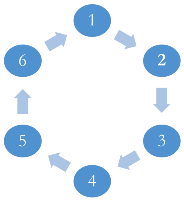RISE - Rapid-Improvement Support and Exchange
The Ontario Ministry of Health has taken a big step towards achieving full coverage of the Ontario population with the Ontario Health Teams (OHT) model by inviting 17 teams to submit a full application to join cohort 2 of OHTs (in addition to the 29 teams approved as part of cohort 1). If approved and at maturity, these OHTs will cover 80% of the province’s population. The emergence of Ontario Health Teams (OHTs) may one day be seen to be as landmark a development in Ontario’s health system as the introduction of universal coverage for hospital-based and physician-provided care.
OHTs will not achieve their desired impacts on their own. They will need to learn rapidly from one another and from those who’ve succeeded (and failed) in similar work outside Ontario. They will also need to improve rapidly and share their successes (and failures) with others. As part of the ministry’s OHT Central Program of Supports, RISE will provide support for rapid learning and improvement by OHTs, both in using a population-health management approach to move the needle on quadruple-aim metrics (e.g., care experiences and specific health outcomes) for their priority populations and in putting in place the eight OHT building blocks.
Rapid learning and improvement involves six steps:
- identifying a problem (or goal) through an internal and external review
- designing a solution based on data and evidence generated locally and elsewhere
- implementing the plan (possibly in pilot and control settings)
- evaluating to identify what does and does not work
- adjusting, with continuous improvement based on what was learned from the evaluation
(and from other OHTs’ evaluations) - disseminating the results to improve the coverage of effective solutions across the health system.
Priority populations
OHTs will initially need to learn and improve rapidly in using a population-health management approach to move the needle on quadruple-aim metrics for their priority populations. These priority populations include those identified prior to the COVID-19 pandemic (e.g., people with mental health and addictions issues and older adults with chronic conditions) and now also those at risk of or affected by COVID-19. OHTs can then build on these experiences in steadily expanding their priority populations in later years, with the goal of eventually improving quadruple-aim metrics for their entire attributed population.
OHTs will also need to learn and improve rapidly in putting in place each of the eight OHT building blocks (which correspond to the OHT requirements in the ministry’s original guidance document). These building blocks include patient partnership, collaborative decision-making, and digital health, among others. Designing these building blocks will require strategic choices in 58 domains. The eight building blocks and their associated domains are described in the RISE brief about OHT building blocks (and are illustrated in the figure below).
Figure: OHT building blocks, related domains, and links to the OHT full application form (click to expand)
To dive a bit deeper into the RISE supports that are already available (or soon will be available), hover over the ‘Access resources’ menu and then click on one of the available options.
View the full list of OHT building blocks and their domains, and access associated resources
View list and access resources


